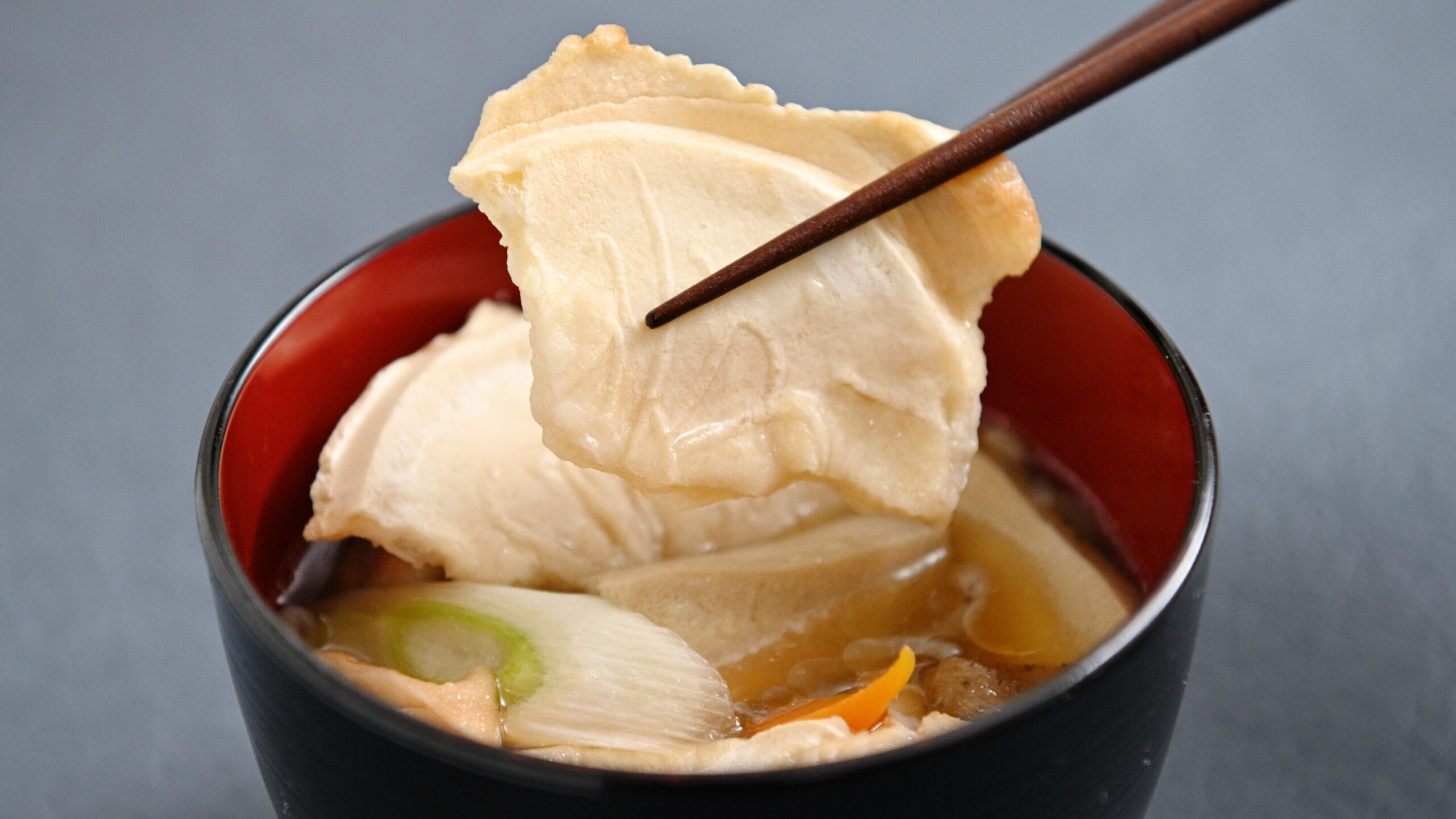
Hey, have you ever thought about putting crackers in your soup? Well, in Aomori, a northern prefecture in Japan, that’s exactly what they do! It’s called “Senbei-jiru,” and it’s a local specialty, especially around Hachinohe City. They take these crispy wheat flour crackers called “Nanbu senbei” and simmer them in a savory broth with chicken, veggies, and other goodies. It might sound a little unusual, but trust me, it’s a comforting and surprisingly delicious dish with a neat history!
Dish Name: Senbei-jiru
- Region / Location: Aomori Prefecture
- Primary Area of Tradition: Hachinohe City
- Main Ingredients: Senbei (wheat crackers), green onions, chicken, shirataki noodles (konjac noodles), wheat gluten (fu), burdock root, frozen tofu, carrots, mushrooms
How It’s Eaten / Served
The most common way to enjoy senbei-jiru is to simmer the wheat crackers in a chicken-based soy sauce broth along with vegetables and shirataki noodles. Some people like to add mushrooms like shimeji for extra flavor. Being a port town, Hachinohe also has variations using cod or grilled mackerel in a salty broth (canned mackerel in brine is a handy shortcut for home cooks!). And for something a bit richer, there’s a miso-based version with horse meat, called “Sakura nabe.” You basically break the senbei into the simmering pot and let it cook until it gets nice and chewy.
Cultural Background and Preservation
Nanbu senbei, the crackers used in this dish, have been a traditional food in the southern part of Aomori and the northern part of Iwate for ages. Back before World War II, many farming families had iron molds to bake these crackers, which were a valuable preserved food in a region that often had poor rice harvests due to cold weather. It’s said that senbei-jiru started when someone tried adding senbei to a fish soup made with dace (a type of river fish). While the dish was a local staple for years, it wasn’t really known as “Senbei-jiru” until the Heisei era (1989-2019). That’s when tourism folks in Hachinohe started promoting it as a local specialty. Now, it’s a well-known regional dish that has boosted local tourism. While families used to bake their own senbei, after their iron pots were given up for the war effort, commercial makers started producing senbei specifically for soup – ones that wouldn’t fall apart and would stay nice and chewy. Today, it’s a common dish in homes during the colder months, and you can find it in restaurants and at events catering to tourists. The “Hachinohe Senbei-jiru Research Institute,” a citizens’ group formed in 2003, played a big role in popularizing the dish and is also known for creating the “B-1 Grand Prix,” a national competition for local gourmet foods.
Additional information:
- Nanbu senbei: A thin, crispy cracker made from wheat flour, salt, and water, traditionally baked in a round iron mold. It’s a staple food in the southern Aomori and northern Iwate regions. The ones used in senbei-jiru are specially made to withstand simmering without disintegrating.
- Shirataki noodles: Thin, translucent noodles made from the konjac yam. They have a chewy texture and are low in calories.
- Fu (wheat gluten): A type of processed wheat gluten that comes in various shapes and textures. It absorbs the flavor of the broth and adds a unique texture to the dish.
- B-1 Grand Prix: A popular Japanese competition where local gourmet dishes from across the country compete for popularity. Senbei-jiru gained significant recognition through this event.
The information about regional cuisine featured on this website (Piggy's Grandma of Japan) is summarized and adapted from the Ministry of Agriculture, Forestry and Fisheries of Japan (MAFF) website, "Our Regional Cuisines"Additional commentary is provided based on the unique experiences and perspectives of the site's editors.
The copyright for the original content regarding regional cuisine belongs to the Ministry of Agriculture, Forestry and Fisheries of Japan.
The summaries and adaptations published on this site are intended for informational purposes only. Piggy's Grandma of Japan does not guarantee the accuracy or completeness of this information. For the most accurate and complete details, please refer to the original pages on the MAFF website.


